If you’re looking for a tranquil camping location in central California, Fallen Leaf Lake is well worth checking out.
Situated about two-thirds of the way between the Bay Area and Reno, Nevada, Fallen Leaf Lake offers stunning campsites and a wealth of outdoor activities.
Here’s everything you’ll want to know about this hidden gem in the Lake Tahoe region and how you can make it your next camping getaway.
Fallen Leaf Lake: The Basics
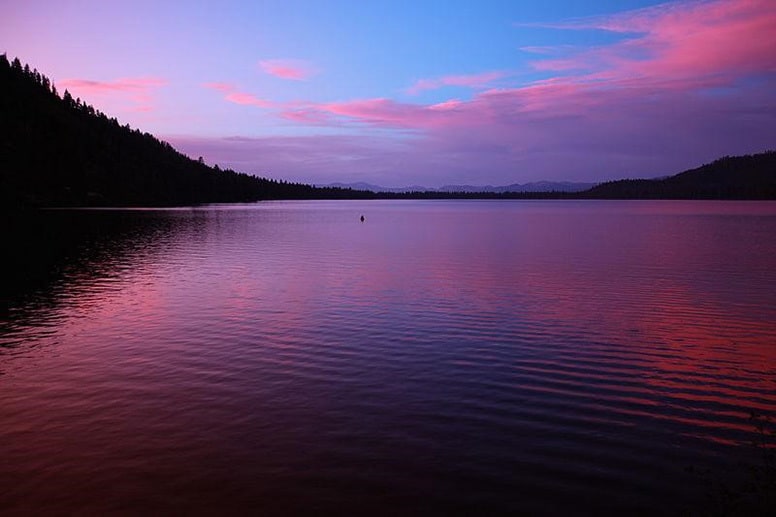
Fallen Leaf Lake is a mountain lake in California’s scenic El Dorado County.
You may be familiar with the area because of Fallen Leaf’s more famous neighbor—Lake Tahoe, about a mile northeast.
Fallen Leaf Lake is considerably smaller than Lake Tahoe, however, which makes hiking its perimeter and navigating the shores by boat much easier.
This gorgeously clear lake makes up in depth what it lacks in circumference. Only about three miles long by one mile wide, Fallen Leaf Lake is roughly 415 feet deep at its deepest.
It averages depths of 240 feet throughout, and the visibility is good to about 40 or 50 feet in many spots.
Part of the National Forest System, Fallen Leaf Lake is managed by the Lake Tahoe Basin Management Unit (LTBMU).
The land surrounding the lake is leased as private land from LTBMU and the US Forest Service.
This has reduced commercial development and helped preserve its pristine waters. Some of the private homes on the lake’s edge aren’t even accessible by road and can only be reached on foot or by boat.
Fallen Leaf Lake has only one campground, as well as a small marina and store.
That means it’s quiet and undisturbed for campers. You can hit Lake Tahoe for nightlife and shopping while making Fallen Leaf Lake your serene base camp.
The water in Fallen Leaf Lake is not just clear: it’s actually potable. Fed by the Glen Alpine Creek by snow runoff, the lake’s outflow runs through Taylor Creek via a small dam and spillway.
The lake turns over, completely replacing its water, about every eight years. By comparison, it takes Lake Tahoe hundreds of years to accomplish the same natural process!
Geology And Natural History
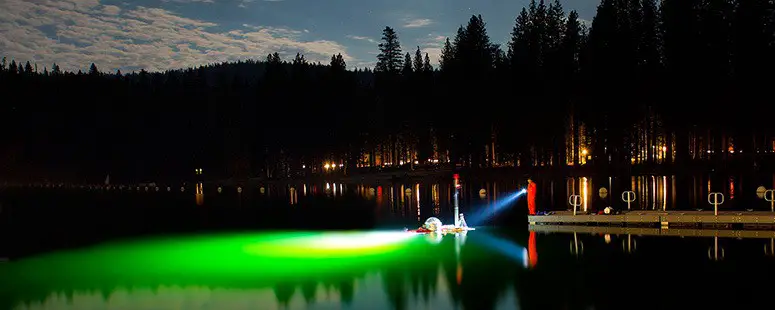
Both Fallen Leaf Lake and Lake Tahoe were created by glacial activity, thousands of years ago.
You can see a terminal moraine at the north end of the lake where the glacier stopped, which kept Fallen Leaf Lake from becoming part of Lake Tahoe.
The hole created by the glacier gave Fallen Leaf Lake its depth. It also means there are steep drop-offs at the edge of the lake, particularly at the southern end.
While swimmers and boaters should be aware of these precipitous drops, the glacial geology provides a good structure for fish. It also makes for some vivid underwater viewing, up to about a quarter mile down in select areas.
Other interesting underwater features of Fallen Leaf Lake are the petrified conifers at its bottom. Preserved by the lake’s cold water, these 800-year-old pine trees may indicate that there was a drought between the ninth and twelfth centuries, that caused the lake to dry up.
There are even older trees in Fallen Leaf Lake, estimated at 18 to 35 centuries old. It’s thought that these trees slid into the lake during some sort of seismic event and didn’t grow there originally.
If you find this topic interesting, you’ll want to check out the Fallen Leaf Lake footage collected by the Undersea Voyager Project.
The same glaciers that created Fallen Leaf Lake and Lake Tahoe also made for some amazing rock formations in the area.
You’ll want to make time on your trip to see Mount Tallac and it’s Cathedral Peak, as well as Angora Lookout.
If Mount Tallac looks familiar, it may be because it was featured as a backdrop in the long-running western television show, “Bonanza.”
Accessing Fallen Leaf Lake
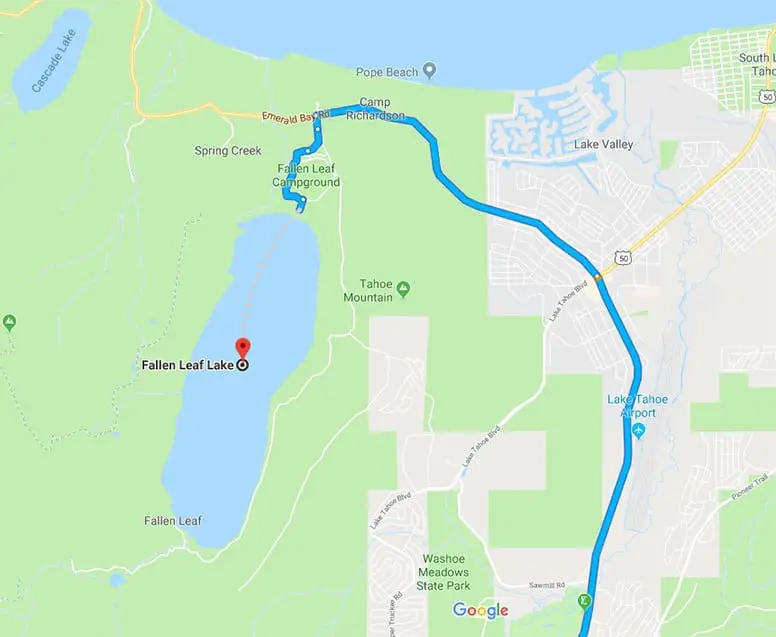
Fallen Leaf Lake has limited access, which is great for keeping it less populated and less noisy than Lake Tahoe.
Keep your eyes peeled for unobtrusive signs, and you’ll have no problem finding it.
Follow State Road 89 north approximately three miles to Fallen Leaf Road, south of Emerald Bay, if you intend to camp at Fallen Leaf (see below).
The campground is about a half mile down Fallen Leaf Road on the right.
Fallen Leaf Road is paved, but it’s one lane in some places, so be prepared to use the turnouts that appear regularly for passing.
The road within the campground and parking spaces there are paved, so this is about as rough as the driving gets.
In the spring, when the snow and rain first stop, though, the roads around Fallen Leaf Lake can have occasional ruts from the winter weather.
Be cautious and go extra slow during the early season.
Also, plan on allowing more time if you’re in a large vehicle or if there are big RVs in front of you.
During the busy season, expect the trip from State Road 89 to the lake to take about 30 minutes.
You don’t want to take a wrong turn down one of the narrow lakeside roads with an RV or trailer.
While roads for boat access at the marina and at the campground are more forgiving, some of the private roads in the area make reversing or turning a challenge.
You’ll pass some huge houses along the road to the lake. Fallen Leaf Lake has long been a desirable vacation home destination, and respite for celebrities and tycoons. With pretty vistas around every turn, you’ll want to take your time and enjoy the drive.
Camping At Fallen Leaf Lake
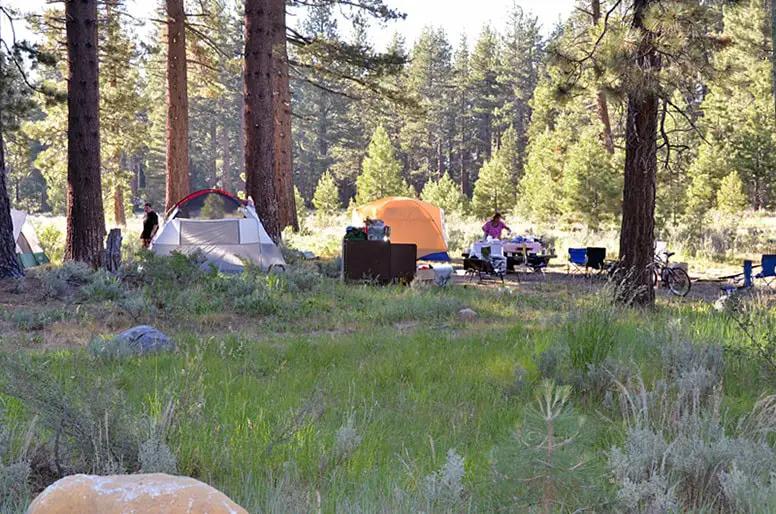
Camping at Fallen Leaf Lake is limited to one campground, the Fallen Leaf Campground, managed by the Lake Tahoe Basin Management Unit.
It’s one of California’s most attractive camping locations, on the north shore of the lake near Taylor Creek.
You can check campsite availability and read camping rules online. Campsites are available for RVs and tent camping, and the campground also has a limited number of yurts for rent.
Campsites are restricted to six people per site.
While there are no electrical, water, or sewer hookups at the RV sites, you won’t miss them, with all the beauty of the location. Camping spots are scattered throughout the pine trees and flower meadows rimming the lake, and it’s a short walk to the water.
For $35 a night, you get a picnic table, camp-side water spigot, and fire ring, as well as the use of the restrooms and coin-operated hot shower.
There is a camp host onsite, with basic supplies and firewood available for purchase and a public phone for campers’ use.
While Fallen Leaf Campground is considerably less crowded than camping at Lake Tahoe, it is still very popular. Be aware that it can fill up quickly during the mid-May to mid-October season, so make your reservations early.
Fallen Leaf Campground allows two pets per site, except in the yurts, where no pets are allowed.
Dogs are not permitted on the lakeside beaches.
The RV sites at Fallen Leaf vary a little. If you’re traveling in a bigger rig, look for one of the pull-through spaces that will make entering and exiting much easier for you. You will be charged an extra $7 per night if you’re towing a car or second vehicle.
Because of droughts and the recent higher fire risk in California, there could be fire restrictions imposed at any time. Be aware that you may not be able to have a campfire as planned.
If you’re traveling a long distance and want to check fire conditions in advance, call the Lake Tahoe Basin Management Unit Supervisor’s Office at (530) 543-2600.
Even if you’re permitted a fire, make sure it’s never left unattended, and extinguish it carefully when finished.
It’s a good idea to read up on campfire safety before you camp, to prevent accidentally starting a blaze.
Fallen Leaf Lake is a terrific place for wildlife and bird watching. There are black bears in the area, so take care to use the bear latches on public trash cans to discourage their appearance in the camp itself.
Don’t leave pets unattended outside, and never feed wildlife.
Recreational Activities At Fallen Leaf Lake
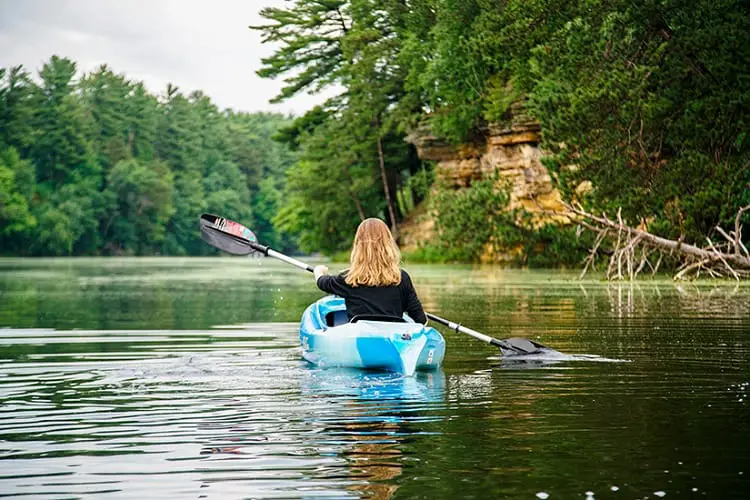
You can take your pick from dozens of recreational activities at Fallen Leaf Lake while you’re camping there. And, of course, the views for photography and painting are unparalleled.
Water Sports
Because of its beauty and the quiet that surrounds, the lake is loved by water sports enthusiasts. Some options for you include:
- Kayaking
- Canoeing
- Jet skiing
- Water skiing
- Rowing
- Swimming
- Sailing
- Fishing
The lake is typically calmest in the morning, so that’s the best time to be out if you want to avoid chop and waves.
Know, too, that the winds there can be unpredictable, so sailing may be a challenge for novices. However, the lake is, fortunately, shaped like a large oval, which makes navigation fairly simple.
There is a sole marina at the southern end of Fallen Leaf Lake, where you can rent paddle boards, paddle boats, and other watercraft.
You’ll also find a small store there that serves lunch food, like burgers and fries, from Memorial Day until the first of October.
Once the marina store is closed for the season, you can still sit in the dock area and bring in your own food. This is a good spot to visit if you have young kids in strollers.
The marina is open from 8:00 am until dusk every day. You can purchase boat fuel there, as well as rent a slip for overnight docking.
If you bring your own boat, be aware that you may need to wait in line to launch at the height of the summer season and that turn around times may be tight.
This isn’t the place to practice your trailer backing skills! Boat inspections are required prior to launch, so allow a little extra time for that.
This is to prevent invasive species, like quagga mussels, from being inadvertently brought into the lake.
You can have your boat inspected ahead of launch, which will save you both time and fees. If you don’t have an inspection sticker, you will be charged a fee and must decontaminate it on the spot before it will be permitted in the lake.
Most two-stroke outboard motors were banned decades ago on Fallen Leaf Lake, which has cut down on water pollution. Only direct injected two-cycle engines are allowed now, in addition to four-cycle motors.
Fishing isn’t as good on Fallen Leaf Lake as it is on Lake Tahoe, but many anglers prefer the former for its tranquility and small size. The lake is stocked by the US Forest Service, and you need a California fishing license to catch fish.
Lahontan cutthroat trout have been recently reintroduced there.
This is a native species that is finally doing well after the population was damaged by non-native species.
Hiking
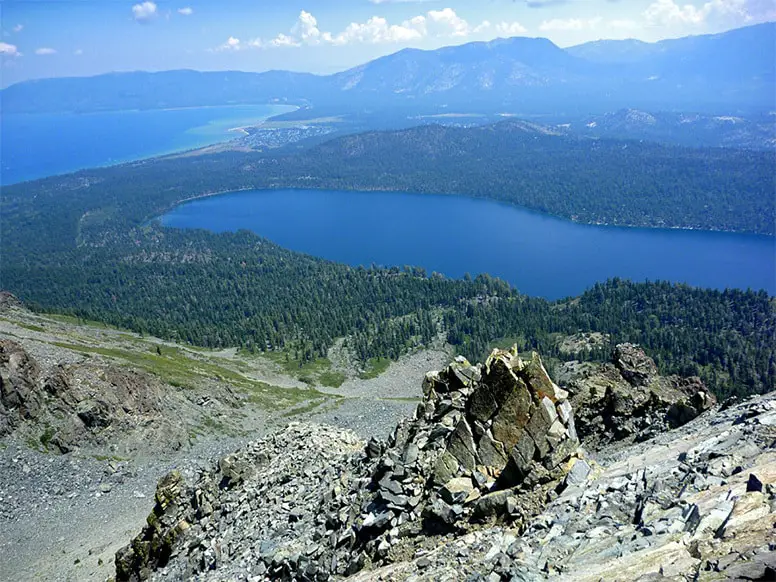
Hiking is another favorite activity in the Fallen Leaf Lake region, with its panoramic vistas and trails that can accommodate nearly every fitness level.
Whether you enjoy a casual stroll, a brisk climb, or a trail run, you’ll find the perfect spot there.
Fallen Leaf Trail
This is an eight-mile long trail around the perimeter of the lake, and it’s mostly flat to moderate terrain, with some climbing and scrambling required.
The trail is maintained by the Lake Tahoe Basin Management Unit. In all the but dryest weather, there is a lovely waterfall at the trailhead. Dogs are allowed on this trail.
Keep a close eye on the map, however, as it can be easy to veer off the designated path.
Glen Alpine Trail
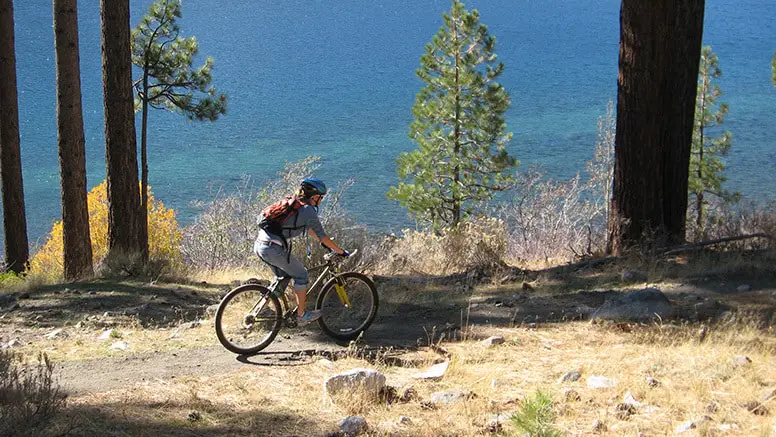
This five-mile hike will leave you breathless, but the sights are worth it. The start of the trail is rockier than further on, and you’ll need real hiking shoes or boots.
You’ll get to experience stream crossings and waterfalls on this trail, so watch the water height early in the season or after rains.
Moraine Trail
Looking for a family hike that’s not too difficult? Check out the Moraine Trail.
This two-and-a-half-mile hike crosses the Fallen Leaf Lake dam before a gentle climb, with awesome views at the end.
Mount Tallac Loop
If you’re an advanced hiker, this may be the loop for you. Encompassing Fallen Leaf Lake, Aloha Lake, and Mount Tallac, this track extends 15 miles, so be sure to bring enough food and water for the trek.
You’ll want a map too, and be prepared for an altitude gain of over 4,000 feet. The rewards are views along the way and the solitude you’ll experience, as few hikers can handle the demands of this loop.
Kokanee Salmon Trail Runs
While you can certainly enjoy trail runs around Fallen Leaf Lake on your own, if you’d like to participate in a formal event, try the Kokanee Salmon Trail Runs.
These autumn races offer 5-kilometer, 10-kilometer, and half-marathon distances, as well as races for kids.
If you plan to be in the area for a while, the Tahoe Mountain Milers can help you find suitable running trails and folks to train with.
Biking
There are bicycle rentals available near Fallen Leaf Lake that you may want to visit on your way in if you’re driving a larger vehicle with bike carriers.
In addition to paved paths near the lake, there are mountain bike paths further afield for more hardy riders.
Final Tips

Fallen Leaf Lake can be a spectacular camping experience, especially if you follow the tips above and arrive prepared.
Here are a few more tips to help you make the most of your trip:
Buy or bring shoes for the water. The beaches can be rocky around the lake. Avoid cutting or bruising your feet with rubber-soled water shoes or old sneakers.
Never move firewood. Bringing firewood from one area to another can spread insects that kill trees and vegetation. Plan on buying your firewood at the campsite or not having a fire at all.
Respect the wildlife.
When you’re in the California woods, you are encroaching on the habitat of wildlife there, not the other way around. Try to leave a minimal impact on the area, and only interact with wildlife from a distance to reduce human contact.
Don’t forget your binoculars!
Watch the lake currents. Fallen Leaf Lake can have strong currents in the middle of the water, as well as along the shore whenever the wind picks up. Be careful when swimming and using small boats or paddleboards. Supervise children at all times when they are in the water.
Consider going in the off season. Like most camping locales, summer is the busy season at Fallen Leaf Lake.
Try camping there after Labor Day, when the days are still warm and the crowds have dispersed.
You’ll feel like you practically have the place to yourself!


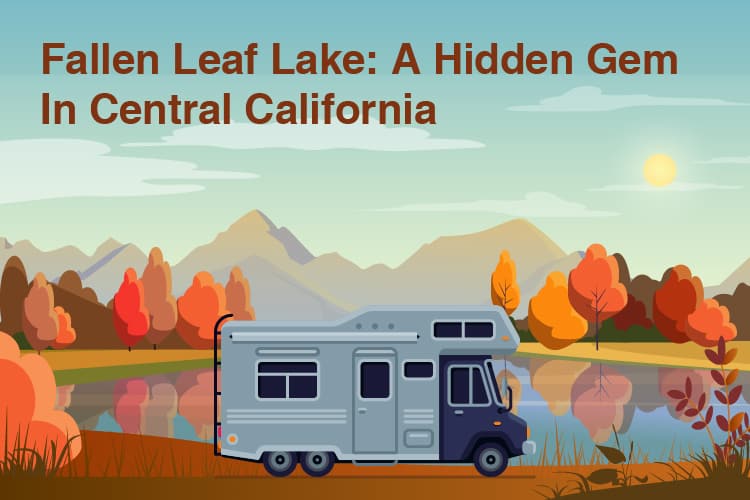

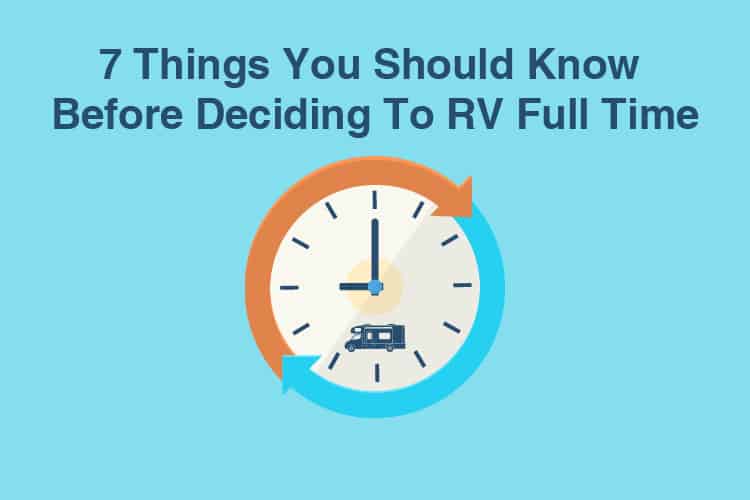
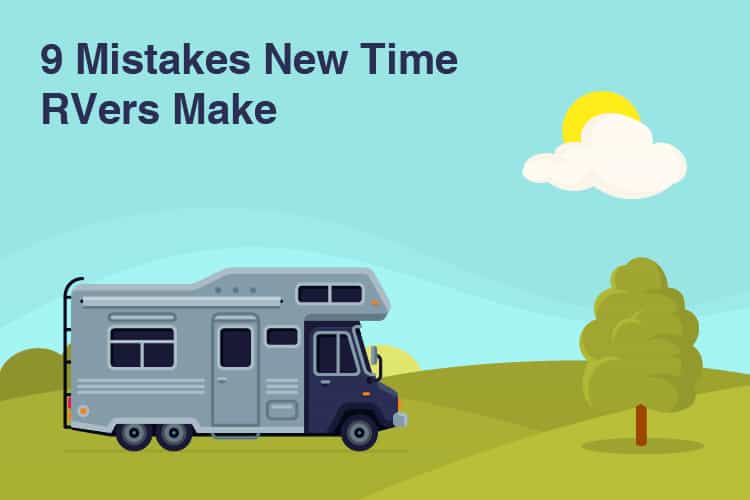
In my five decades of hiking,horse camping,the rediculous anoyance of RVers can be found everywhere. We were tenting at this park for three days and were caught in the “generator sandwich”as there isn’t a way to know in advance who will show up with one. And with this 200 plus site park, “tranqual” it is not. The sites are too close together too, and with plenty more acres there….dissapointment sets in easily for me as I grew up in logging camps and ranching. City folks likely will not have an issue here though.